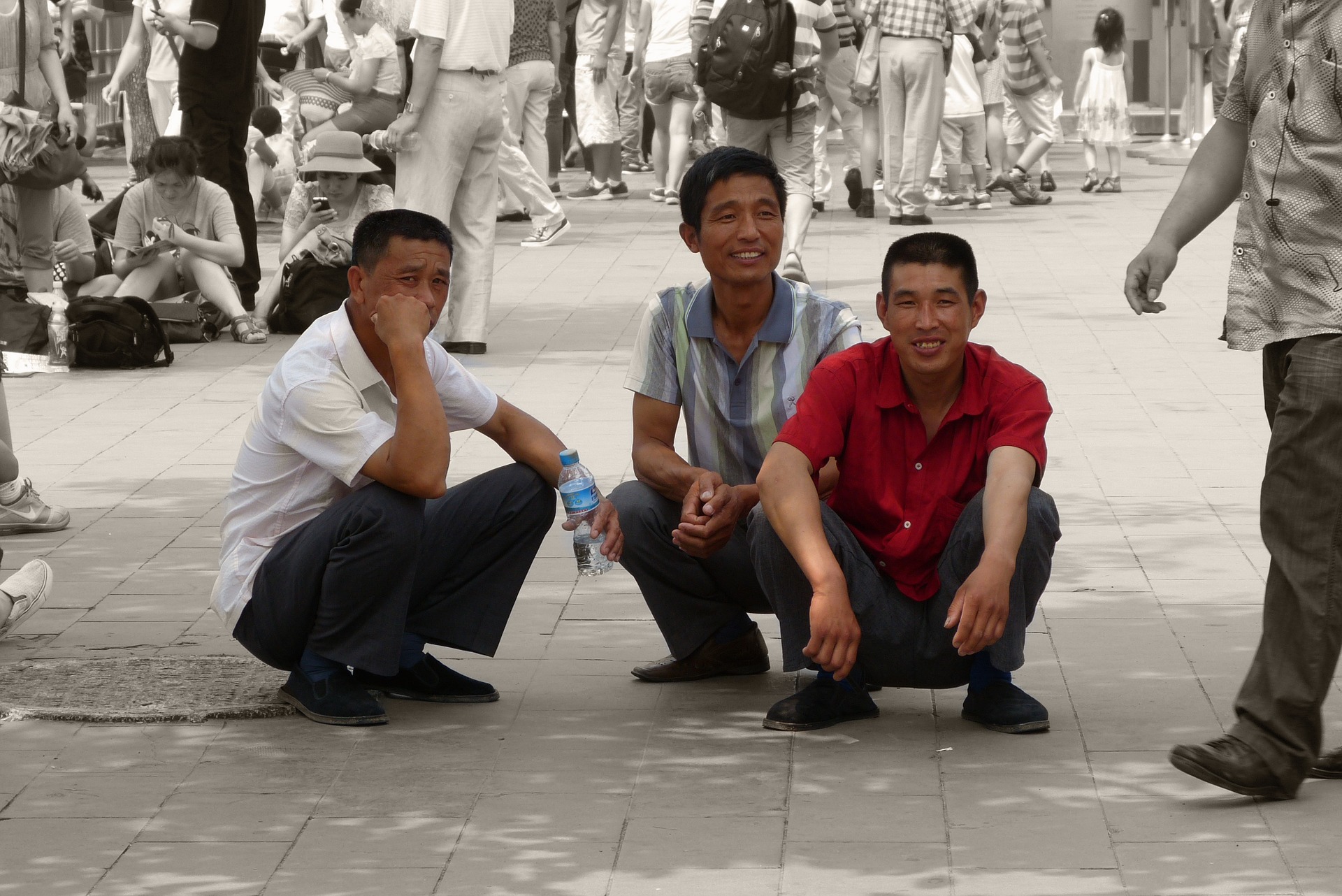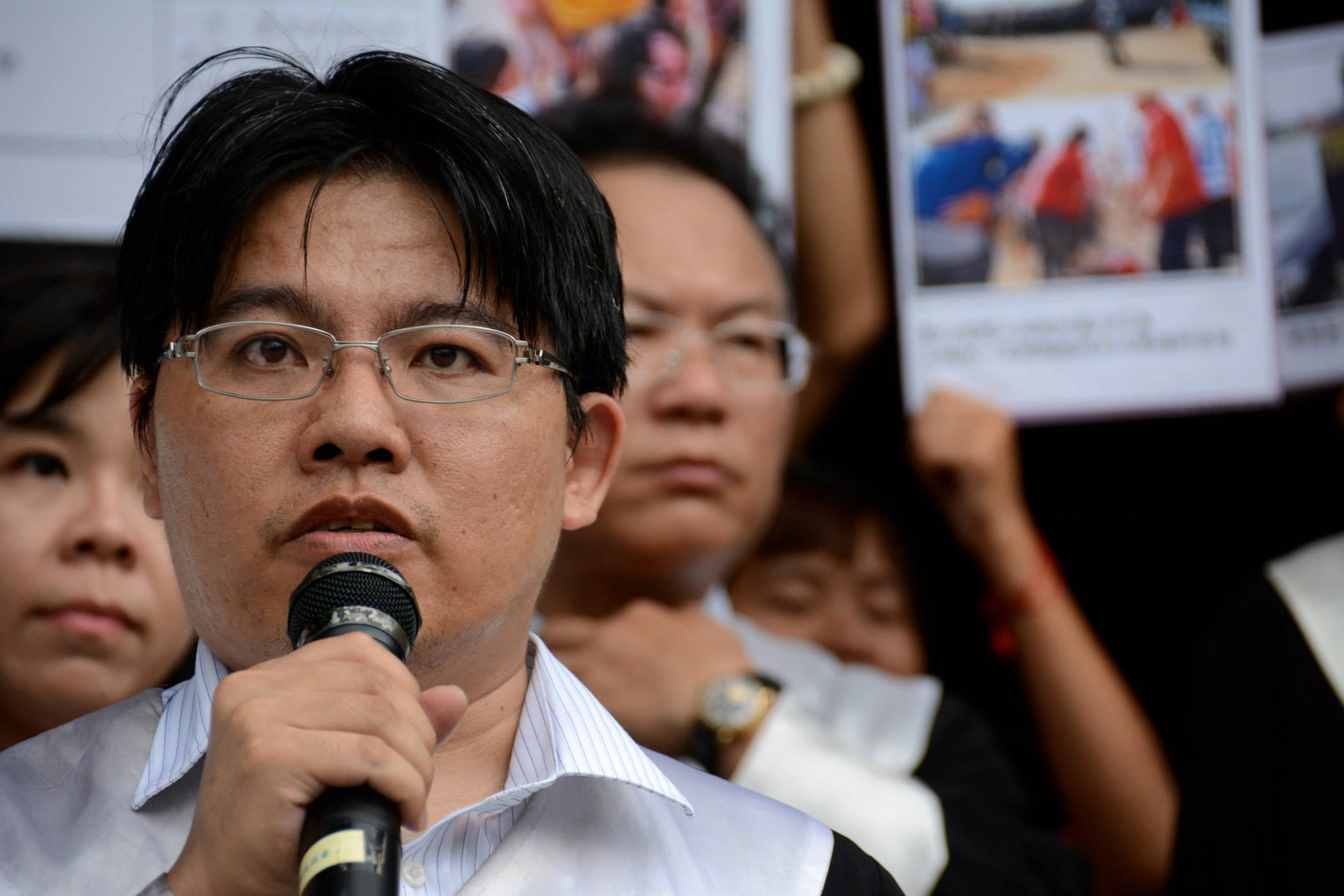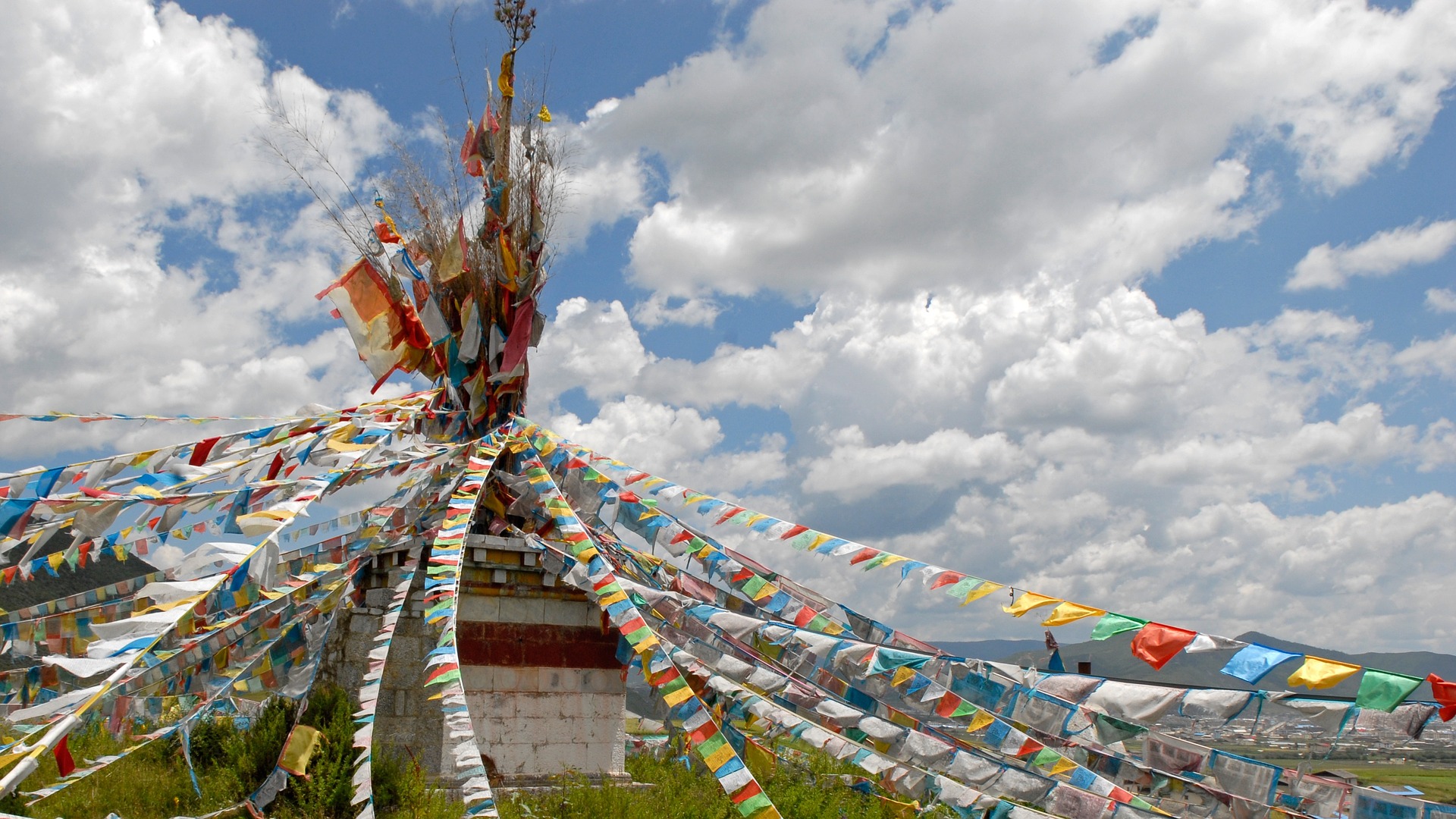In a fascinating and well informed account, Richard McGregor traces the vicissitudes of what is arguably today’s most significant trilateral relationship in global affairs.
The cover of the U.S. edition of Asia’s Reckoning, the new book from veteran journalist Richard McGregor, does little to recommend it. Stark against a black background, the Chinese flag looms menacingly over that of the United States, which in turn is suspended above the flag of Japan. From between the flags, the book’s title and subtitle (“China, Japan, and the Fate of U.S. Power in The Pacific Century”) shout out in all-caps. Thankfully, there are no coiled dragons or snarling tigers — but the effect is similar. If I didn’t know better, coming upon Asia’s Reckoning at an airport bookstore, I might dismiss it as another pulpy screed about the Asian economic menace, as opposed to the nuanced, deeply researched, and rigorously even-handed treatment of a very complex subject that it is. That will teach me to judge a book by its cover.
In Asia’s Reckoning, McGregor traces the vicissitudes of the trilateral relationship between the U.S., China and Japan since the end of World War II. Along the way, he offers rich and colorful profiles of these three key stakeholders and their fraught, emotion-inflected and hugely consequential interactions over the years. Landing in the first year of the Trump administration, after a summer of provocative missile tests by North Korea, and just in time for China’s 19th Party Congress, the book provides a timely assessment of what, exactly, is at stake in the political order in East Asia today: nothing less than a Reservoir Dogs-style standoff, McGregor suggests, with each pointing a gun at one another; mutually antagonistic, yet vitally interdependent.
McGregor is a former Financial Times bureau chief in Beijing and Washington and author of The Party, a revelatory account of the inner workings of the Chinese Communist Party published in 2012. His working knowledge of Chinese and Japanese allowed him to draw on a wide range of primary sources — including many of his own interviews — in both languages. The result is that rare thing: a study whose wonkish depth is in the service of its historical breadth, and vice versa. In that respect, it recalls John Pomfret’s monumental account of the history of U.S.-China relations, which I reviewed in Taiwan Sentinel earlier this year.
A study whose wonkish depth is in the service of its historical breadth, and vice versa.
Beginning in the immediate postwar period, McGregor lays out the key turning points in the three-way relationship, from the 1951 Treaty of San Francisco which ended the allied occupation of Japan to the 1960 bilateral security pact between Japan and the U.S.; from Nixon and Kissinger’s blindsiding of Tokyo in their secretive opening to Communist China in 1971 to Reagan’s trade wars with Japan a decade later; from the friendly apex of the Sino-Japanese relationship in the 1980s, through its souring over the history wars and the rise of nationalism in both countries; and the simmering conflict over the status of the Senkaku/Diaoyu/Diaoyutai Islands, which flared up in 2012 against the backdrop of the Obama administration’s “pivot to Asia.” It ends, of course, with President Donald Trump, who as a candidate wondered aloud about the need for the U.S. to defend Japan at all, casually threatening to upend the postwar order.
 A good deal of the book’s narrative energy derives from the lively vignettes of high diplomacy that punctuate the 60-year period in question. McGregor is a virtuosic scene-setter and he makes the reader a fly on the wall for many a deliciously awkward moment. There are several episodes worth mentioning — Jiang Zemin’s impromptu lecture on history at a state banquet hosted by Emperor Akihito in Tokyo in 1998, Foreign Minister Yang Jiechi’s apoplectic outburst at Secretary of State Hillary Clinton at the ASEAN summit in 2010 — but none as tense as the confrontation between Chinese President Hu Jintao and Japanese Prime Minister Yoshihiko Noda at the 2012 APEC summit. McGregor treats us to a blow-by-blow account of the encounter, which took place between sessions and rendered the other officials present — including Clinton — agog. Hu and Noda ended up just inches apart, with Hu “visibly shaking with anger” after Noda raised the issue of the status of the Senkaku/Diaoyu Islands. The following day, the Japanese government announced that it would formally purchase the islands from their private owner, leading to military flights and a wave of anti-Japanese protests — stage-managed if not scripted by the party — in more than 200 Chinese cities.
A good deal of the book’s narrative energy derives from the lively vignettes of high diplomacy that punctuate the 60-year period in question. McGregor is a virtuosic scene-setter and he makes the reader a fly on the wall for many a deliciously awkward moment. There are several episodes worth mentioning — Jiang Zemin’s impromptu lecture on history at a state banquet hosted by Emperor Akihito in Tokyo in 1998, Foreign Minister Yang Jiechi’s apoplectic outburst at Secretary of State Hillary Clinton at the ASEAN summit in 2010 — but none as tense as the confrontation between Chinese President Hu Jintao and Japanese Prime Minister Yoshihiko Noda at the 2012 APEC summit. McGregor treats us to a blow-by-blow account of the encounter, which took place between sessions and rendered the other officials present — including Clinton — agog. Hu and Noda ended up just inches apart, with Hu “visibly shaking with anger” after Noda raised the issue of the status of the Senkaku/Diaoyu Islands. The following day, the Japanese government announced that it would formally purchase the islands from their private owner, leading to military flights and a wave of anti-Japanese protests — stage-managed if not scripted by the party — in more than 200 Chinese cities.
Then there are the small, surprising details that add color and humanity to the sometimes austere annals of international relations that are McGregor’s source material: Mao glibly telling a Japanese delegation that an apology for its invasion would not be necessary because “it is not good for a nation to feel constantly guilty” in the mid-1950s; Henry Kissinger’s complaint that the Japanese ambassador always served him Wiener schnitzel for lunch at the embassy; Obama’s raising of his hands above his head “like a stop sign” to ask Xi Jinping to cool it with his anti-Japanese rant during a meeting in 2013; or George W. Bush in his gym clothes after a session on the stationary bike on Air Force One, seeking advice from his two key Asia aides on how to handle Japanese historical revisionism. More than just diverting the political junkies among us, these anecdotes hint at the extent to which divergent personalities and cultural norms — not just politics and policy — have shaped the three-way relationship over the years. In that respect, the book bears out the maxim of a Chinese friend of McGregor’s, quoted in the introduction: “The Americans like the Chinese, but they don’t like China. They like Japan, but don’t like the Japanese.”
Like any good work of historical analysis, the book offers a powerful corrective to our tendency to assume that things have always been as they are now. McGregor evokes the fear, widespread among U.S. consumers and policymakers during the 1970s and 80s but hard to imagine now, of Japanese techno-nationalism — bringing to mind the ambivalence of Harry “Rabbit” Angstrom, the iconic protagonist of John Updike’s Rabbit quartet of novels who runs a Toyota dealership in suburban Pennsylvania. (In the final novel, a Japanese executive from the company, sketched as a racist caricature by Updike, visits Rabbit and terminates the franchise, citing the sloppy American work ethic.) McGregor’s suggestion that the economic conflict with Japan was “a practical and psychological dress rehearsal for America’s coming rivalry with China” rings true. By the end of the book, however, it is clear that the combination of the People’s Republic of China’s increasingly assertive international posture and its authoritarian political system make it a fundamentally different adversary than the Japan of the 1970s and 80s.
A quiet yet persistent theme of the book is the politicization of foreign policy, reflected in the diminishing clout of expert diplomats and the growing influence of political staffers — in all three countries. McGregor identifies Jiang Zemin’s 1998 visit to Tokyo as a turning point, in which leaders of both countries rejected the advice of their specialist diplomats in favor of a more combative approach that aligned with the burgeoning patriotism of their populations. On the U.S. side, there are multiple instances of administration officials growing frustrated with the conservatism of the Asianists in the State Department, including Christopher Hill, who snapped at one Japanologist, “That’s such complete Asia-hand, inside baseball bullshit.” That McGregor has sympathy for those experts is not surprising, given the depth of his own regional expertise and the rigorous objectivity of his reporting. But in the context of the book’s larger thesis, that Asia — and with it, the rest of the world — is entering an era of potentially lethal instability, the sidelining of knowledgeable diplomats and civil servants (most recently in the U.S. under Secretary of State Rex Tillerson) should be a universal cause for concern.
McGregor’s conclusion, that American power in the Asia Pacific is declining as China’s global ambition grows, has huge ramifications for Taiwan, which he describes as “a living embodiment of east Asia’s postwar ideological divide.”
Taiwan does not figure heavily in McGregor’s narrative, which is surprising given that the island-nation sits physically and politically in the middle of the U.S.-China-Japan triangle. Nonetheless, he provides a satisfying overview of Taiwan’s late-20th century history through the figure of former president Lee Teng-hui, a native-born with no attachment to China who “personified all of Beijing’s fears about Taiwan.” Noting that Lee was “born and raised under the Japanese colonial period and proud of it,” McGregor highlights the affective connection that has endured between Japan and Taiwan since the end of Japanese rule in 1945, a subject not well understood among China experts. In an earlier chapter, he describes the significance of that connection for Japanese elites in the aftermath of the war: “For Japanese conservatives constantly being asked to atone for a war they considered just and forced upon them, such loyalty provoked powerful sentiments.” It’s a small detail, but one that typifies the complex emotional currents set in motion more than a century ago and that continue to swirl in the region.
McGregor’s conclusion, that American power in the Asia Pacific is declining as China’s global ambition grows, has huge ramifications for Taiwan, which he describes as “a living embodiment of east Asia’s postwar ideological divide.” No government has benefitted more directly from the American security umbrella in the past half century; but then, no one has done more with the opportunity than the 23.5 million Taiwanese who have used it to create a fully functioning democratic state with a vibrant civil society. In a region where history festers and where, McGregor writes, “there has been little of the introspection and statesmanship that helped Europe to heal its wounds” after 1945, Taiwan is making progress towards its own reckoning with the past. With the recent establishment of a truth and reconciliation commission to pursue transitional justice for victims of the White Terror, Taiwan is setting an example — however unheeded — for its neighbors.
One of the book’s premises is that the Pax Americana that has underwritten Asia’s dramatic economic growth is degenerating. Since it went to press earlier this year, the prospects for American global leadership have grown even grimmer. While Donald Trump has engaged in an escalating war of words with Kim Jong-Un, Xi Jinping has ushered in a new era of national rejuvenation and Shinzo Abe is preparing to become Japan’s longest-serving post-war prime minister in a snap election. Asia’s Reckoning contains many lessons — the toxicity of historic conflict unresolved, the importance of diplomacy, the speed with which great powers can rise and fall — but the one that sits heaviest seems to be this: a country’s foreign policy is only as good as the people who make it. America may well be falling into the other, more dangerous Thucydides trap — having built an empire, letting it go — but the trajectory just might be reversible yet.
Book Details
Asia’s Reckoning: China, Japan, and the Fate of U.S. Power in The Pacific Century
Richard McGregor
Viking (2017)
396 pages
You might also like
More from Book Reviews
Lawyer, Advocate, Activist: Chiu Hsien-chih’s Vision for Justice in Taiwan
In his book ‘Stand By You,’ human rights lawyer Chiu Hsien-chih examines major human rights cases, problems with Taiwan’s legal …
New Book of Tibetan Short Stories Challenges China Narrative
‘Old Demons, New Deities’ will resonate in Taiwan, a country that, like Tibet, is torn between the competing realities of …









